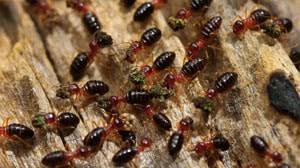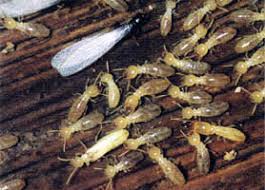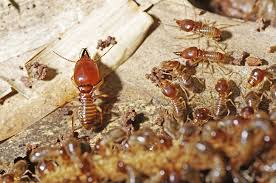What Does Termite Control Online Do?
Termites are known to take pollen and frequently see flowers,177 are regarded as potential pollinators for a number of flowering plants.178 One blossom in particular, Rhizanthella gardneri, is regularly pollinated by foraging employees, and it is possibly the only Orchidaceae flower in the world to be pollinated by termites.177
Many plants have developed powerful defences against termites. However, seedlings are vulnerable to termite attacks and need additional protection, as their defence mechanisms only grow when they've passed the seedling stage.179 Defence is typically achieved by secreting antifeedant chemicals into the woody cell walls.180 This reduces the ability of termites to efficiently digest the cellulose.
When retained close to the infusion, they get disoriented and eventually perish.181.
Termite populations can be substantially influenced by environmental changes including those due to human intervention. A Brazilian study investigated the termite assemblages of 3 websites of Caatinga under different levels of anthropogenic disturbance in the semi-arid region of northeastern Brazil were sampled using 65 x 2 m transects.182 A total of 26 species of termites were present in the three websites, and 196 encounters were listed in the transects.
4 Simple Techniques For Termite Control On Walls
The wood-feeders were the most severely affected feeding team. .
A termite nest can be considered as being composed of 2 components, both the inanimate and the animate. The animate is all of the termites living inside the colony, and the inanimate part is the construction itself, which is constructed by the termites. Nests can be broadly separated into three main categories: subterranean (entirely below ground), epigeal (protruding above the soil surface), and arboreal (constructed above ground, but constantly connected to the ground via shield tubes).184 Epigeal nests (mounds) protrude from the ground with ground contact and are created from ground and mud.
Most termites construct underground colonies rather than multifunctional nests and mounds.186 Primitive termites of today nest in wooden structures such as logs, stumps and the dead parts of trees, as did termites millions of years back.184.

Some Known Details About Termite Control On Wood
To build their nests, termites primarily utilize faeces, which have many desirable properties as a construction material. Other building materials include partly digested plant material, used in carton nests (arboreal nests built from faecal elements and wood), and soil, used in subterranean nest and mound construction. Not many nests are observable, as many nests in tropical forests are situated underground.186 Species in the subfamily Apicotermitinae are good examples of subterranean nest builders, since they only reside inside tunnels.
Nests and mounds protect the termites' delicate bodies against desiccation, light, pathogens and parasites, in addition to providing a fortification against predators.188Nests made from carton are particularly weak, and thus the inhabitants utilize counter-attack approaches against invading predators. .
Arboreal carton nests of mangrove swamp-dwelling Nasutitermes are enriched in lignin and depleted in cellulose and xylans. This change is caused by bacterial illness in the intestine of the termites: they utilize their faeces as a carton building substance. Arboreal termites nests can account for as much as 2% of above ground carbon storage in Puerto Rican mangrove swamps.


Termite Control On Walls Things To Know Before You Buy
Nests are considered mounds should they protrude from the planet's surface. why not find out more A mound provides termites exactly the same protection for a nest but is stronger.189 Mounds located in regions with torrential and continuous rainfall are in danger of mound erosion as a result of their clay-rich construction. Those made from carton can provide protection from the rain, and in fact can withstand high precipitation.
By way of example, Cubitermes colonies construct narrow tunnels used as strong points, since the width of the tunnels is small enough for troops to obstruct.192 A highly secure chamber, known as the"queens cell", houses the queen and king and is employed as a final line of defence. .
Species in the genus Macrotermes arguably build the most complex structures in the insect world, constructing enormous mounds. These mounds are among the largest in the world, reaching a height of 8 to 9 metres (26 to 29 feet), and consist of chimneys, pinnacles and ridges.56 Another termite species, Amitermes meridionalis, can construct nests 3Â to 4Â metres (9Â to 13 ft ) high and 2.5 metres (8Â ft ) wide.
The sculptured mounds sometimes have elaborate and distinctive types, like those of their compass termite (Amitermes meridionalis and A. laurensis), which assembles tall, wedge-shaped mounds using the long axis oriented approximately northsouth, which gives them their common name.194195 This orientation has been experimentally shown to assist More about the author thermoregulation. The north-south orientation causes the internal temperature of a mound to increase rapidly during the morning while avoiding overheating from the midday sun.